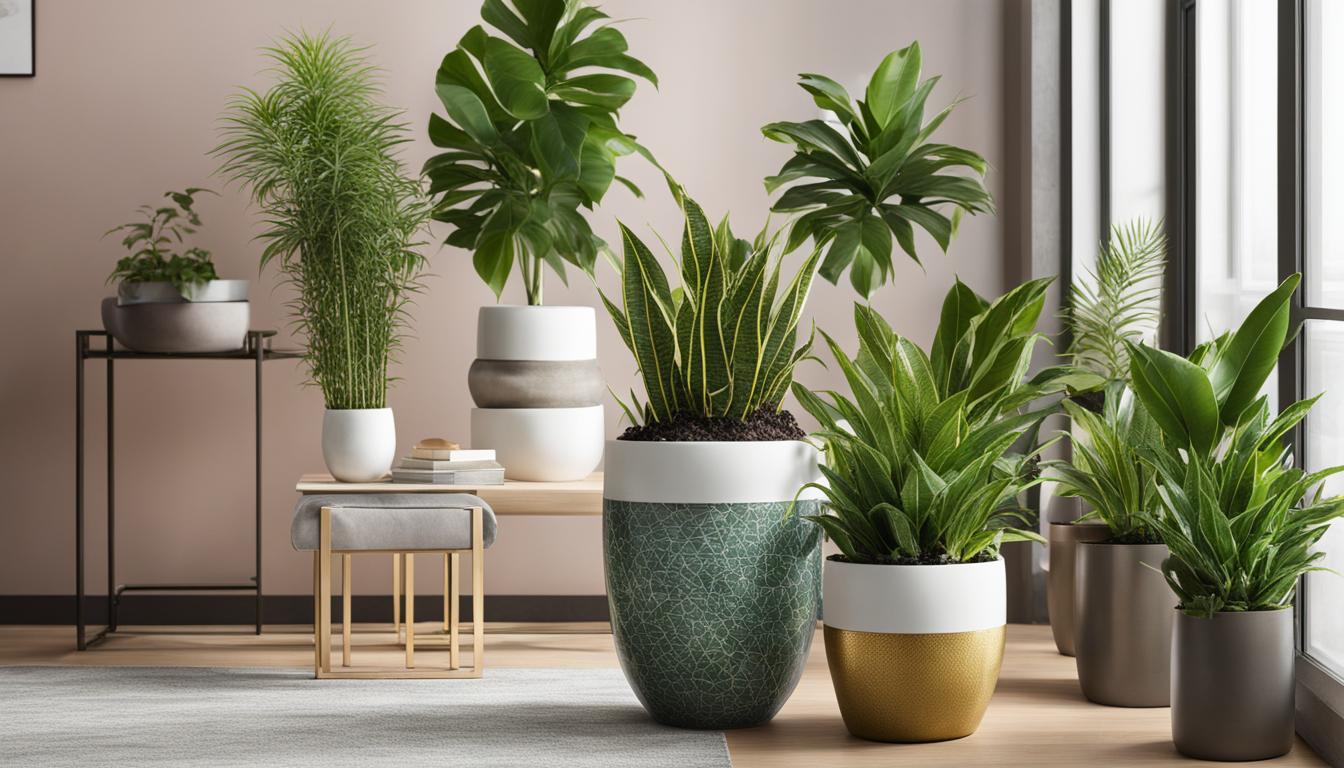
Indoor plant care has become a popular and rewarding hobby for many people. As we enter 2023, it’s important to stay up-to-date on the latest trends that can help you take your plant care routine to the next level.
From sustainability and variegation to supporting small businesses and using peat-free potting mixes, there are plenty of exciting developments to explore.
Key Takeaways:
- Stay informed about the latest trends in indoor plant care for 2023.
- Embrace sustainability by using renewable resources and biological controls.
- Decorate your space with plants featuring variegated leaves for a unique and striking aesthetic.
- Support small businesses and environmentally conscious brands that offer organic fertilizers and peat-free potting mixes.
- Consider using white planters to create a clean and timeless look in your indoor plant displays.
Sustainability in Indoor Plant Care
In 2023, there is a growing focus on sustainability in indoor plant care. Companies are adopting sustainable practices and utilizing renewable resources to minimize their environmental impact.
One of the key aspects of sustainability in plant care is the use of renewable resources such as coconut coir as an alternative to traditional potting mixes. Coconut coir is a byproduct of the coconut industry and provides an excellent growing medium for plants.
Biological controls are also gaining popularity as an eco-friendly alternative to chemical pesticides. Instead of using harsh chemicals to control pests, companies are employing biological controls such as beneficial insects and nematodes.
These natural predators help to keep pest populations in check without harming the environment.
Furthermore, there is an increasing availability of eco-friendly plant products, including organic fertilizers and peat-free potting mixes. Organic fertilizers are made from natural sources and provide essential nutrients to plants without the use of synthetic chemicals.
Peat-free potting mixes, on the other hand, are formulated without the use of peat, which is a non-renewable resource that is often harvested from delicate ecosystems.
Eco-Friendly Plant Products:
| Product | Description |
|---|---|
| Organic Fertilizers | Derived from natural sources, such as compost or animal manure, organic fertilizers provide plant nutrients without synthetic chemicals. |
| Coconut Coir | A renewable resource made from the husk of coconuts, coconut coir is an excellent alternative to traditional peat-based potting mixes. |
| Biological Controls | Beneficial insects and nematodes that prey on pests, offering a natural and eco-friendly way to control pest populations. |
| Peat-Free Potting Mixes | Formulated without the use of peat, these potting mixes provide a sustainable alternative that reduces the impact on delicate ecosystems. |
By embracing sustainability in indoor plant care, individuals and businesses can contribute to a healthier and more eco-friendly approach to plant cultivation.
With the use of renewable resources, biological controls, and eco-friendly plant products, we can create a greener future for our indoor gardens.
Variegation in Indoor Plants
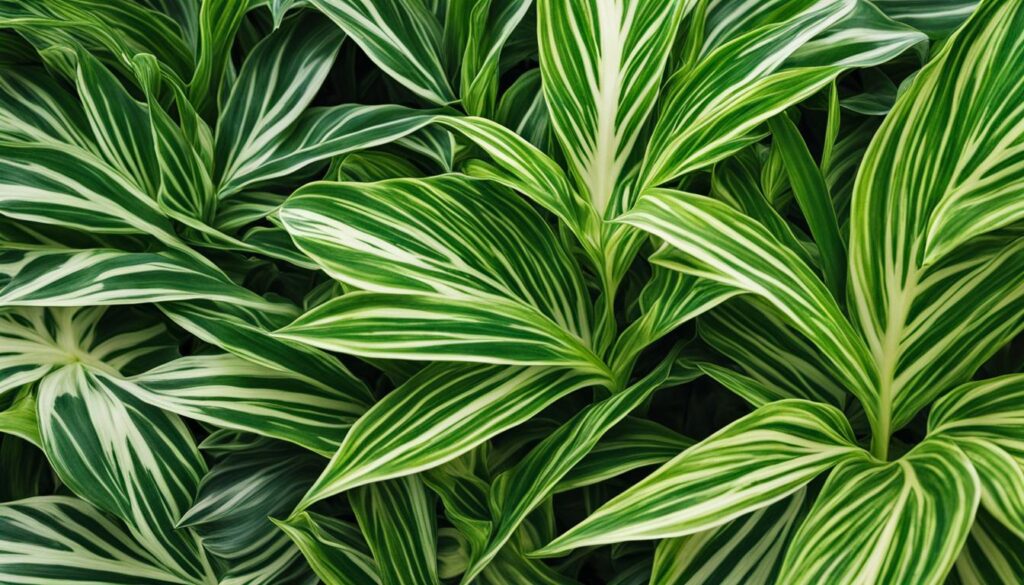
Variegation is a top trend in indoor plants for 2023. These plants feature leaves marked by distinct and diverse coloration, such as white, silver, or pink.
The unique patterns and shades of variegated plants add visual interest and create a striking focal point in any indoor space.
Some popular variegated plant varieties include the White Aspen Dracaena, Silver Dragon Alocasia, Cool Beauty Dieffenbachia, Painted Lady Philodendron, Golden Goddess Philodendron, Chameleon ZZ, and Lemon Meringue Pothos.
Adding variegated plants to your home or office can bring a touch of elegance and style. These plants can be displayed on their own as statement pieces or mixed with other plants to create a visually captivating display.
The contrasting colors of variegated leaves provide a beautiful backdrop for other greenery, making them a versatile choice for any plant collection.
Whether you prefer the subtle beauty of white and silver variegation or the vibrant hues of pink and gold, there is a variegated plant variety to suit every taste.
Embrace this trend and enhance your indoor space with the captivating beauty of variegation.
Popular Variegated Plant Varieties
| Plant Variety | Leaf Color |
|---|---|
| White Aspen Dracaena | White and Green |
| Silver Dragon Alocasia | Silver and Green |
| Cool Beauty Dieffenbachia | White and Green |
| Painted Lady Philodendron | Pink, Green, and White |
| Golden Goddess Philodendron | Gold and Green |
| Chameleon ZZ | Green, Yellow, and White |
| Lemon Meringue Pothos | Yellow and Green |
Plants with Large Leaves
In 2023, the trend of incorporating plants with large leaves into indoor spaces is on the rise. These statement-making plants add instant impact and create a lush and vibrant atmosphere.
A standout plant in this category is the White Bird of Paradise, also known as Strelitzia nicolai. With its large banana-shaped leaves that can grow several feet long, it brings a sleek and tropical look to any room.
Unlike its cousin, the Orange Bird of Paradise, the White Bird of Paradise can thrive indoors even in colder states, making it a versatile choice for plant enthusiasts across different climates.
Its impressive size and unique foliage make it a focal point in any space, whether used as a standalone plant or as part of a curated indoor garden.
When it comes to indoor plant care, the White Bird of Paradise requires bright, indirect light and moderate watering.
It appreciates well-draining soil and occasional misting to mimic its natural tropical habitat. With proper care, this stunning plant with large leaves can thrive and bring a touch of exotic beauty to any indoor setting.
Support for Small Businesses in Plant Care
In 2023, there will be a trend of supporting small businesses and environmentally conscious brands in the world of plant care. With a focus on sustainability, more options are available for organic fertilizers and soil.
Small businesses are a good place to start for plant parents looking to support environmentally conscious brands. There is an increasing number of options for high-quality sustainable plant products that align with the trend of caring for plants in an eco-friendly manner.
These small businesses not only offer a diverse range of organic fertilizers but also provide valuable knowledge and expertise in plant care.
They often prioritize sustainable practices and strive to offer products that are free from harmful chemicals and pesticides.
By supporting these small businesses, plant parents can contribute to a greener future and promote the growth of sustainable plant care practices.
Furthermore, environmentally conscious brands are known for their commitment to sustainability. They prioritize using renewable resources, minimizing waste, and adopting eco-friendly packaging solutions.
These brands are actively working towards reducing their carbon footprint and promoting a more sustainable approach to plant care. By choosing products from these brands, plant parents can make a positive impact on the environment while ensuring the health and well-being of their plants.
| Benefits of supporting small businesses and environmentally conscious brands in plant care: |
|---|
| Access to a wide range of high-quality organic fertilizers and soil |
| Promotion of sustainable practices in plant care |
| Reduction of the carbon footprint in the plant care industry |
| Support for local and small-scale businesses |
| Contribution to a greener future |
Peat-Free Potting Mixes
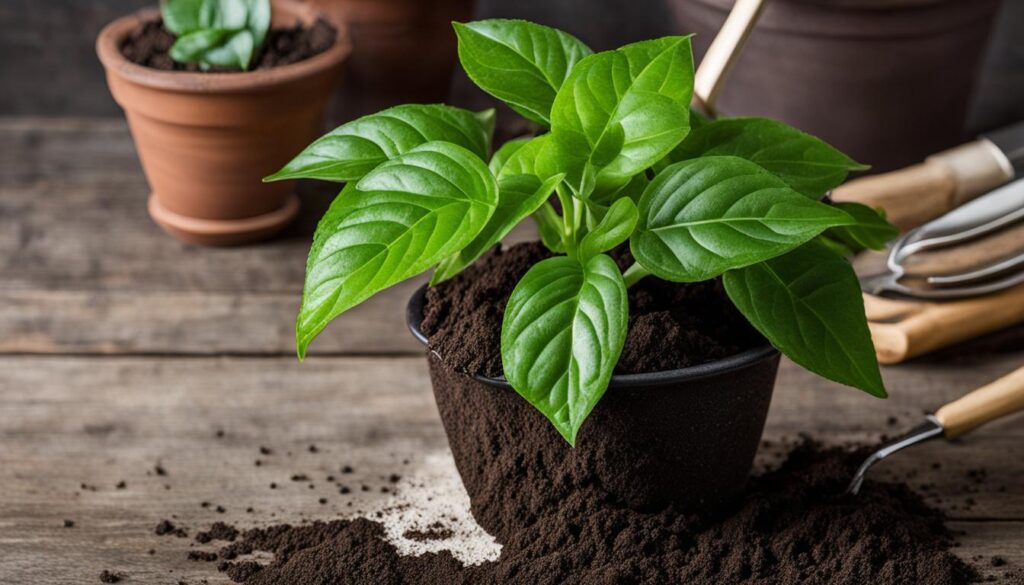
In 2023, the demand for peat-free potting mixes is on the rise as more people prioritize sustainable gardening practices. Peat, traditionally used as a major component in potting mixes, is obtained by harvesting from wetlands.
But, this practice contributes to the destruction of delicate ecosystems and the release of CO2 into the atmosphere. To address these environmental concerns, companies are now offering alternatives that utilize bark and wood fiber as key ingredients.
Using bark and wood fiber as substitutes for peat offers several advantages. Firstly, these materials are derived from upcycled sources, such as byproducts of lumber production.
This reduces waste and promotes sustainable resource management. Secondly, bark and wood fiber provide excellent drainage and retain moisture, creating a favorable environment for plant roots. They also help prevent soil compaction, allowing for better air circulation.
The Benefits of Peat-Free Potting Mixes
By choosing peat-free potting mixes, gardeners can contribute to the preservation of wetland habitats and reduce their carbon footprint.
Also, these mixes offer improved water retention, nutrient availability, and aeration for plants. They can be used for a wide variety of indoor and outdoor plants, including flowers, vegetables, herbs, and succulents.
How to Use Peat-Free Potting Mixes
When using peat-free potting mixes, it’s important to ensure that plants receive proper care. Watering frequency may need to be adjusted, as these mixes can dry out more quickly than those containing peat.
It’s also recommended to incorporate organic fertilizers into the soil to provide essential nutrients. Regular monitoring of plant health and adjusting care practices accordingly will help ensure successful growth and development.
| Advantages of Peat-Free Potting Mixes | Disadvantages of Peat-Free Potting Mixes |
|---|---|
|
|
White Planters in Indoor Plant Care
White planters are set to be hot on the market in 2023. The clean look they offer allows the plants to stand out, creating a stylish and modern aesthetic.
White planters are versatile and can complement any décor style, whether it’s minimalist, bohemian, or traditional. Their neutral color provides a fresh and timeless appeal that never goes out of style.
One of the advantages of white planters is their ability to highlight the natural beauty of the plants. The contrast between the vibrant green foliage and the crisp white surface creates a visually striking display.
Whether you have lush tropical plants or delicate succulents, white planters make them the center of attention.
Moreover, white planters also have practical benefits. The light color reflects more light compared to darker containers, which can help improve plant growth.
Also, white planters are available in various materials such as ceramic, terracotta, or plastic, making them suitable for different budgets and preferences.
Why Choose White Planters?
There are several reasons why white planters are a popular choice among plant enthusiasts:
- They create a clean and fresh look in any space.
- They blend seamlessly with various interior design styles.
- They allow the plants to take center stage, emphasizing their natural beauty.
- They reflect more light, benefiting plant growth.
- They are available in a wide range of materials and sizes, catering to different preferences.
| Material | Pros | Cons |
|---|---|---|
| Ceramic | Durable and adds a touch of elegance | Can be heavy and more expensive |
| Terracotta | Allows better airflow to plant roots | Requires more frequent watering |
| Plastic | Lightweight and affordable | May not have the same aesthetic appeal as other materials |
When choosing white planters, consider the material that best suits your needs, as each has its own benefits and considerations. Ultimately, white planters offer a versatile and aesthetically pleasing option for showcasing your indoor plants, adding a touch of elegance and sophistication to any space.
Rise in Plant Care Resources
In 2023, the world of plant care will experience a rise in resources aimed at helping plant parents learn and improve their plant care skills.
Whether you are a seasoned plant enthusiast or just starting your plant journey, these resources will provide valuable insights and tips to help you successfully care for your indoor plants.
One of the notable resources that will be available are workshops offered by local plant shops and nurseries. These workshops will cover a range of topics such as troubleshooting common plant issues like yellowing leaves, identifying and managing pests, and achieving specific plant care goals like leaf shingling.
Attending these workshops will allow plant parents to gain hands-on knowledge and interact with experts in the field.
In addition to workshops, there will be an increase in online resources such as blogs, websites, and social media platforms dedicated to plant care.
These platforms will provide a wealth of information, including care guides for specific plant species, DIY tutorials for plant-related projects, and plant care tips from experienced plant enthusiasts. Plant parents can access these resources at their convenience and learn at their own pace.
With the rise in plant care resources, it has never been easier to expand your plant care knowledge and grow as a plant parent.
Whether you prefer in-person workshops or online resources, there will be something for everyone to enhance their plant care skills and ensure the well-being of their indoor plants.
Workshops and Online Resources
Plant care workshops offered by local plant shops and nurseries are a great way to learn about plant care directly from experts. These workshops provide hands-on experience and personalized guidance, allowing plant parents to develop essential skills and knowledge.
Topics covered may include watering techniques, fertilization, pest control, and repotting. Attending workshops can also be a great opportunity to connect with fellow plant enthusiasts and share experiences.
In addition to workshops, online resources play a crucial role in providing accessible plant care information. Blogs, websites, and social media platforms dedicated to plant care offer tips, tricks, and detailed guides on various aspects of plant care.
These platforms also provide a sense of community, allowing plant parents to interact, ask questions, and share their own experiences. Online resources are particularly helpful for those who prefer independent learning and want to explore specific plant care topics at their own pace.
| Workshops | Online Resources |
|---|---|
| Hands-on learning | Accessible anytime, anywhere |
| Personalized guidance | Tips, tricks, and guides |
| Connect with experts and enthusiasts | Community interaction |
Whether you choose to attend workshops or explore online resources, the rise in plant care resources ensures that plant parents have ample opportunities to expand their knowledge, improve their skills, and provide the best possible care for their indoor plants.
The Year of Plant Care
2023 has been dubbed “The Year of Plant Care.” Instead of collecting more plants, the focus is on caring better for the ones already owned.
This trend includes investing in better fertilizers, substrates, and growth boosters to nurture indoor plants and help them thrive. It is a year of pampering and spoiling beloved plants, ensuring they receive the best care possible for optimal growth and health.
Indoor plant parents are recognizing the importance of caring for existing plants, rather than constantly adding to their collection. They understand that with the right care and attention, their plants can flourish and bring beauty and tranquility to their space.
As a result, plant enthusiasts are investing in high-quality fertilizers and growth boosters to provide the essential nutrients and support their plants need to thrive.
From organic liquid fertilizers to slow-release granular options, there is a wide range of better fertilizers available on the market.
These fertilizers are formulated to deliver the necessary nutrients in a balanced and easily absorbable form, promoting healthy growth and vibrant foliage. Plant parents are also exploring growth boosters that stimulate root development, enhance overall plant health, and encourage robust growth.
Indoor plant spoiling is another aspect of “The Year of Plant Care.” Plant parents are going the extra mile to create the perfect environment for their plants, ensuring they receive optimal light, humidity, and temperature conditions.
They are investing in plant care tools such as moisture meters and hygrometers to monitor the moisture levels in soil and the humidity in the air. By providing the ideal conditions, plant parents are rewarding their plants with abundant growth and lush foliage.
This year marks a shift in focus from quantity to quality, as plant parents strive to provide the best care possible for their beloved indoor plants. With a range of better fertilizers, growth boosters, and meticulous attention to plant care, 2023 promises to be a year of thriving and flourishing indoor plant life.
Minimalist Approach in Indoor Plant Care
In 2023, the minimalist approach in indoor plant care will gain popularity. Instead of creating lush indoor jungles with a multitude of plants, there is a shift towards curated plant collections focused on specific genera.
This trend involves selecting a smaller number of plants that are carefully chosen to create a cohesive and aesthetically pleasing display.
The minimalist approach allows plant parents to concentrate on the specific needs and characteristics of each plant, ensuring proper care and attention. By focusing on a select group of plants, individuals can better understand and meet their requirements, leading to healthier and thriving indoor greenery.
Curated plant collections offer a visually appealing display, showcasing the natural beauty of each plant. The intentional selection and arrangement of plants in spaces create a sense of harmony and balance. Additionally, the minimalist approach in indoor plant care promotes a clutter-free environment, providing a calming and peaceful atmosphere.
The Benefits of a Minimalist Plant Care Approach
Embracing a minimalist approach in indoor plant care offers several advantages. By focusing on a specific collection of plants, individuals can become more knowledgeable about the unique requirements of each species.
This knowledge allows for more effective care and ensures that plants receive the proper amount of light, water, and nutrients.
Moreover, a minimalist approach encourages plant parents to develop a deeper connection with their plants. By dedicating time and attention to a smaller number of plants, individuals can observe their growth and development more closely.
This intimate connection fosters a sense of fulfillment and satisfaction as plant parents witness the positive effects of their care.
Furthermore, the minimalist approach in indoor plant care promotes a sense of simplicity and mindfulness.
By focusing on a select few plants, individuals can cultivate a deeper appreciation for the beauty and intricacies of each plant. This mindful engagement enhances the overall experience of caring for indoor greenery and fosters a greater sense of well-being.
Houseplants with Healing Properties
In 2023, there will be a growing focus on houseplants with healing properties, as people increasingly recognize the positive impact that plants can have on our well-being. Three standout plants that are well-known for their healing properties are aloe vera, lavender, and snake plants.
Aloe Vera
Aloe vera is a popular succulent that has been used for centuries for its soothing and healing properties. The gel inside its leaves is rich in vitamins, minerals, and antioxidants, making it beneficial for a variety of skin conditions such as sunburns, rashes, and dryness. Aloe vera plants are easy to care for, requiring minimal water and indirect sunlight.
Lavender
Lavender is a versatile plant known for its calming and relaxing properties. Its pleasant scent has a soothing effect on the mind and body, making it ideal for creating a calming atmosphere in bedrooms or relaxation areas. Lavender plants thrive in well-draining soil and require ample sunlight and airflow.
Snake Plants
Snake plants, also known as mother-in-law’s tongue, are renowned for their ability to purify the air. These plants are excellent at removing toxins such as formaldehyde, benzene, and xylene from indoor environments. Snake plants are low-maintenance and can tolerate a wide range of light conditions, making them suitable for any room in the house.
To maximize the healing benefits of these plants, consider creating a designated wellness corner in your home. Cluster these healing plants together in an area where you can relax and unwind.
The presence of these plants can help reduce stress, improve air quality, and promote a sense of tranquility and well-being. Remember to take care of these plants by providing them with the right amount of water, light, and nutrients.
Smart Technology in Plant Care
In the world of indoor plant care, smart technology is making waves in 2023. With the advent of smart plant care devices and plant care apps, managing plants has never been easier.
These technological advancements bring convenience and precision to plant maintenance, ensuring optimal growing conditions for our leafy companions.
One of the key innovations in smart plant care is automated watering systems. These systems take the guesswork out of watering and provide plants with the right amount of moisture at the right time.
By monitoring soil moisture levels and adjusting watering schedules accordingly, plant parents can ensure that their plants receive just the right amount of hydration, preventing both under and overwatering.
Humidity sensors are another smart plant care tool gaining popularity. These devices measure the humidity levels in the air and provide real-time data to plant parents, allowing them to adjust the environment as needed.
This is particularly beneficial for plants that thrive in specific humidity ranges, such as tropical plants. With a humidity sensor, plant parents can create the perfect microclimate for their plants, promoting healthy growth and preventing issues such as dry or overly humid air.
Plant care apps are also becoming an essential tool for plant parents. These apps provide a wealth of information and guidance on caring for specific plant species.
From reminders for watering and fertilizing to tips on troubleshooting common issues, plant care apps can help even the most novice plant parent become a green thumb.
They allow users to keep track of their plant care routines, monitor plant health, and even connect with other plant enthusiasts for advice and support.
FAQ
What are the latest trends in indoor plant care?
The latest trends in indoor plant care include sustainability, variegation, plants with large leaves, support for small businesses, peat-free potting mixes, white planters, rise in plant care resources, focus on caring for existing plants, minimalist approach, houseplants with healing properties, and smart technology in plant care.
How can I incorporate sustainability in indoor plant care?
You can incorporate sustainability in indoor plant care by using renewable resources such as coconut coir, opting for biological controls instead of chemicals for pest control, supporting environmentally conscious brands, and using peat-free potting mixes that use bark and wood fiber as alternatives.
What are some popular variegated indoor plant varieties?
Popular variegated indoor plant varieties include White Aspen Dracaena, Silver Dragon Alocasia, Cool Beauty Dieffenbachia, Painted Lady Philodendron, Golden Goddess Philodendron, Chameleon ZZ, and Lemon Meringue Pothos.
Are there any indoor plants with large leaves that are suitable for indoor spaces?
Yes, there are indoor plants with large leaves that are suitable for indoor spaces. The White Bird of Paradise (Strelitzia nicolai) is a standout plant known for its size and statement appeal. It has banana-shaped leaves that can grow to several feet long, adding a sleek and lush look to any space.
How can I support small businesses in the world of plant care?
You can support small businesses in the world of plant care by purchasing from them instead of large growing companies, opting for environmentally conscious brands that offer organic fertilizers and sustainable plant products, and seeking out local plant shops and nurseries that offer workshops and educational resources.
Why are peat-free potting mixes gaining popularity?
Peat-free potting mixes are gaining popularity because peat, a commonly used growing medium, is harvested from wetlands and disrupts delicate ecosystems. Peat harvesting also releases CO2 into the atmosphere. By using peat-free potting mixes that use bark and wood fiber as alternatives, we can reduce the negative environmental impact.
Are white planters a popular choice in indoor plant care?
Yes, white planters are a popular choice in indoor plant care. They offer a clean look that allows plants to stand out and complement any décor style. White planters provide a timeless aesthetic, add a touch of elegance to any space, and are versatile in their ability to showcase a variety of plants.
Where can I find resources for learning about plant care?
You can find resources for learning about plant care at local plant shops and nurseries. They often offer in-house workshops and educational materials to help plant parents gain knowledge and master the art of plant care. These resources cover topics such as troubleshooting leaf issues, identifying pests, and achieving specific plant care goals.
What is “The Year of Plant Care” trend?
“The Year of Plant Care” trend focuses on caring better for the plants you already own instead of collecting more plants. It involves investing in better fertilizers, substrates, and growth boosters to nurture indoor plants and help them thrive. It is a year of pampering and spoiling beloved plants to ensure they receive the best care possible.
What is the minimalist approach in indoor plant care?
The minimalist approach in indoor plant care involves curating a smaller number of plants, focusing on specific genera, and creating a cohesive and aesthetically pleasing display. This approach allows plant parents to focus on the specific needs and characteristics of each plant, ensuring proper care and attention.
Are there any houseplants with healing properties?
Yes, there are houseplants with healing properties. Aloe vera is known for its soothing properties, lavender promotes relaxation, and snake plants are renowned for their air-purifying abilities. Creating a designated wellness corner with these healing plants can enhance health and well-being.
How can smart technology revolutionize plant care?
Smart technology can revolutionize plant care by providing automated monitoring and assistance. Smart plant care devices and apps allow plant parents to monitor humidity, light levels, and watering needs with precision. Automated watering systems and humidity sensors can be integrated into homes, providing effortless plant care and ensuring optimal growing conditions.

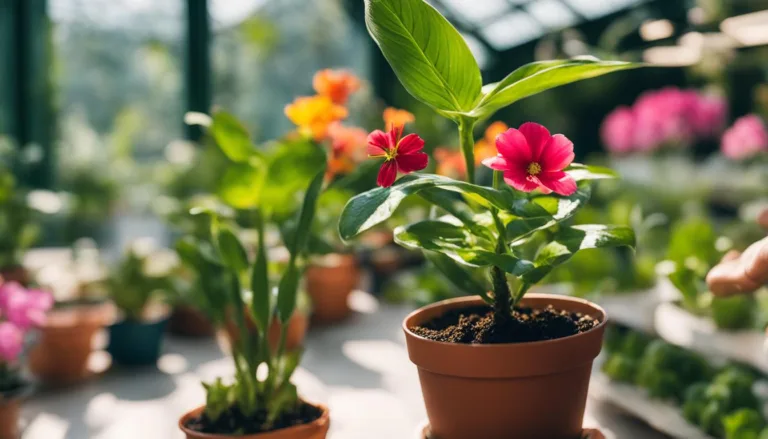
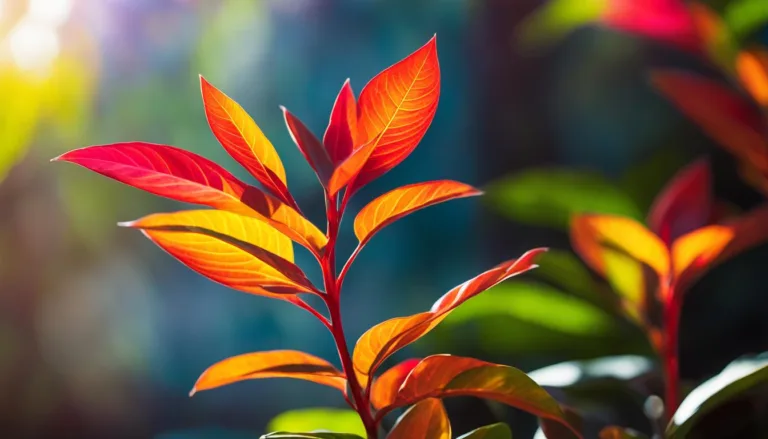
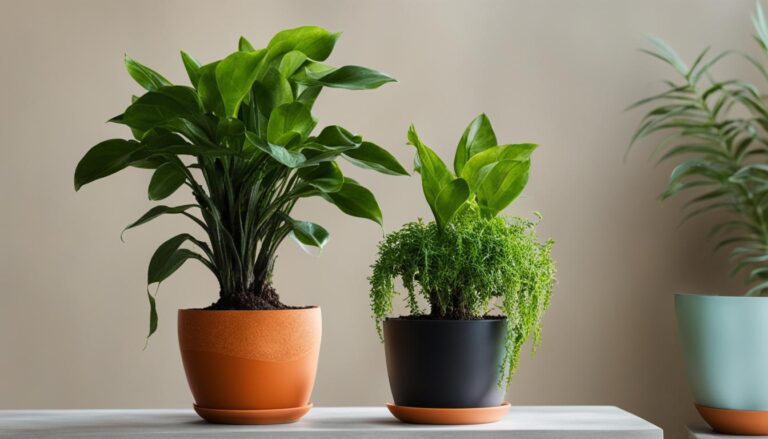
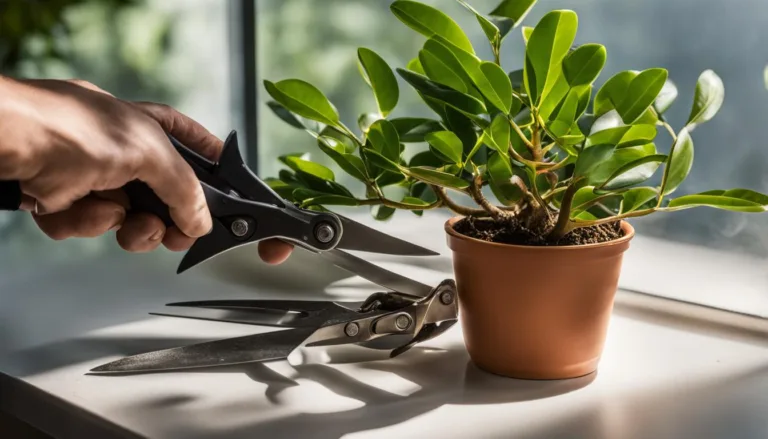

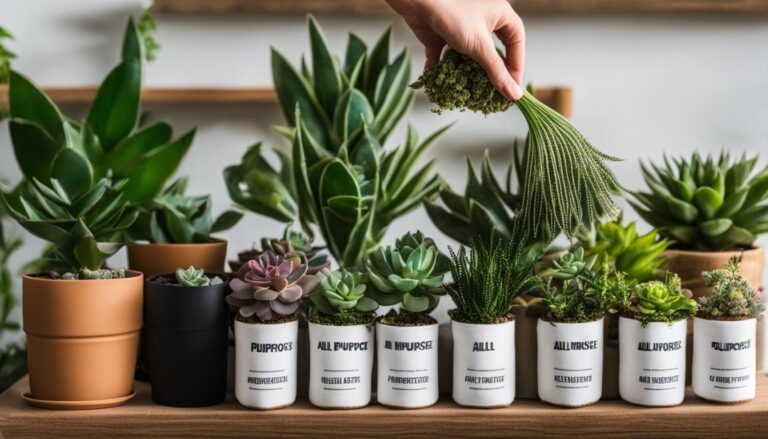
2 Comments
Comments are closed.